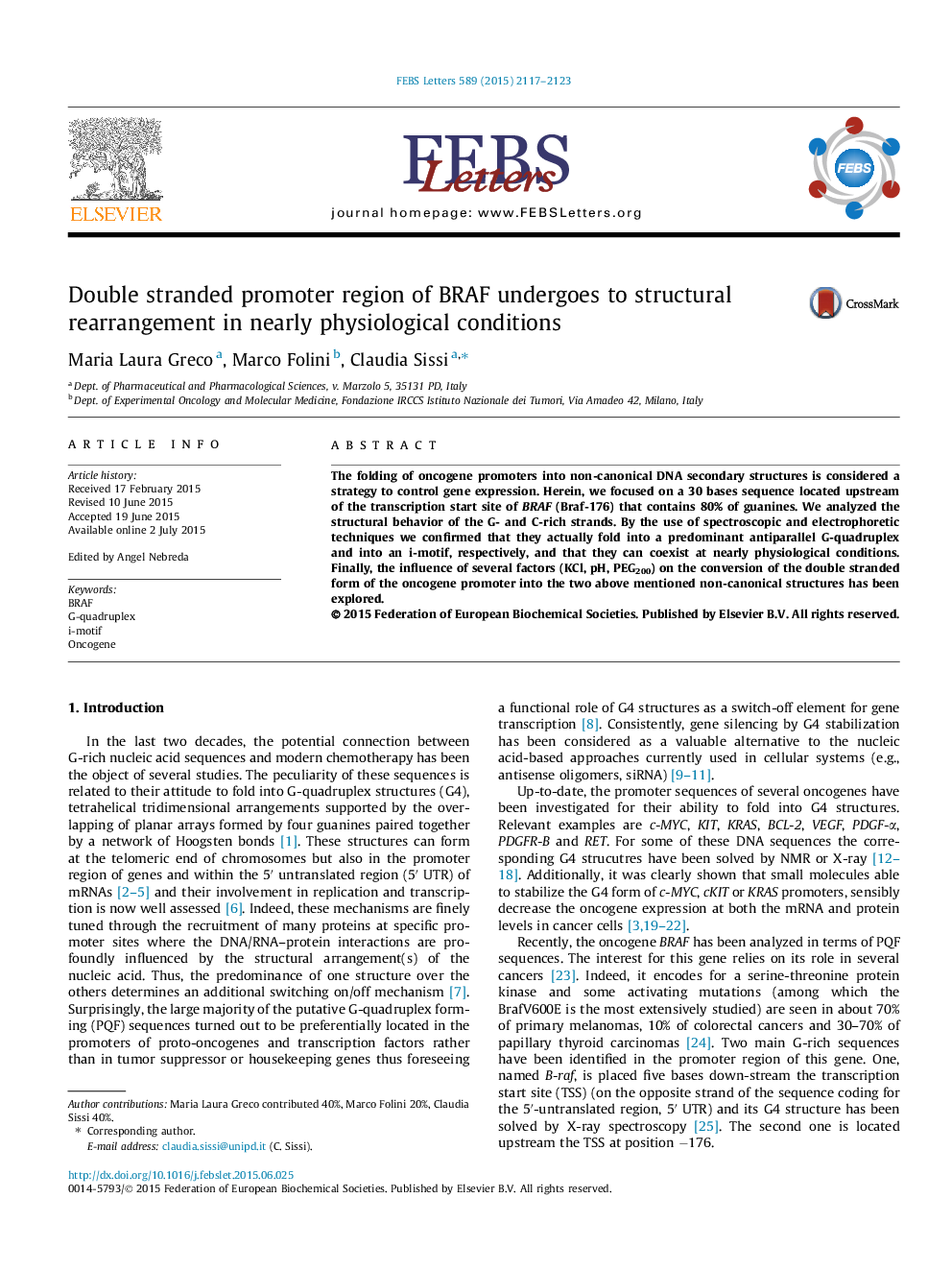| Article ID | Journal | Published Year | Pages | File Type |
|---|---|---|---|---|
| 2047484 | FEBS Letters | 2015 | 7 Pages |
•The G-rich strand of Braf-176 folds into a predominant antiparallel G-quadruplex.•The C-rich strand of Braf-176 assumes an i-motif conserved up to pH 7.0.•The double stranded form of Braf-176 is highly stable.•KCl, PEG and pH modulate the formation of G4 and iM from the ds_Braf-176.
The folding of oncogene promoters into non-canonical DNA secondary structures is considered a strategy to control gene expression. Herein, we focused on a 30 bases sequence located upstream of the transcription start site of BRAF (Braf-176) that contains 80% of guanines. We analyzed the structural behavior of the G- and C-rich strands. By the use of spectroscopic and electrophoretic techniques we confirmed that they actually fold into a predominant antiparallel G-quadruplex and into an i-motif, respectively, and that they can coexist at nearly physiological conditions. Finally, the influence of several factors (KCl, pH, PEG200) on the conversion of the double stranded form of the oncogene promoter into the two above mentioned non-canonical structures has been explored.
